On Saturday, March 21, 2009, college students from all over the country descended upon Tucson, Arizona to volunteer with No More Deaths for Alternative Spring Break. I was the sole representative from The Evergreen State College and I traveled with a group of 14 other students from the University of Washington. We met at Southside Presbyterian Church where first they fed us, and then we began our training as humanitarian aid volunteers in the Arizona desert.
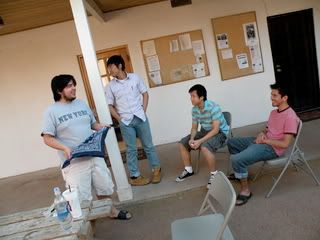
José, Kai, Heiu and Silverio from UW
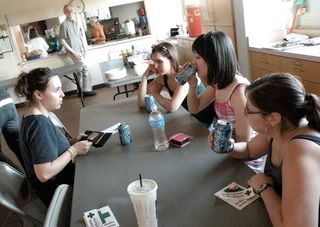
James, Danielle, Erika and Brianna from UW
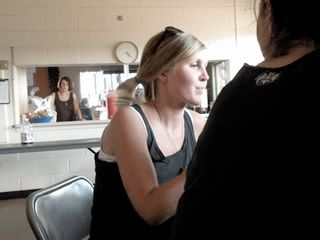
Karina, our amazing group coordinator
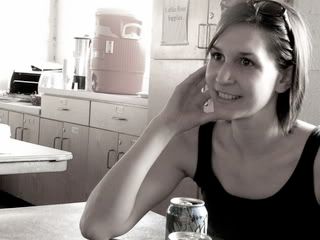
Danielle
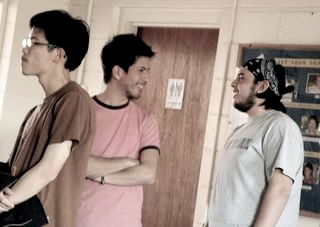
Silverio and José
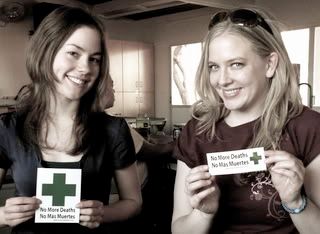
Rachael and me -- No más muertes!
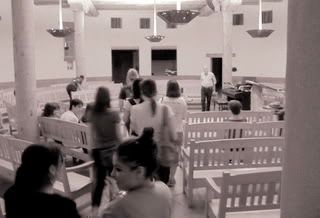
Heading into the sanctuary to begin our training
We were given a volunteer survival packet that we were instructed to carry around with us at all times while on patrol in the desert. It contained all the various contact information for the directors of No More Deaths, along with specific dos and don'ts for various situations regarding contact with migrants and/or border patrol agents. Any time NMD volunteers encounter Border Patrol agents with migrants in custody, it is protocol to approach the situation to assess if there are migrants in need of medical care, water and food. No More Deaths also documents reported cases of human rights abuses from migrants while in custody of Border Patrol. This is part of a larger effort to enact reform at all levels of immigration policy execution.
The next morning on Sunday we continued our training. We were guided in a conversation about privilege, and the reasons why migrants come here in search of work. We discussed the political and economic factors that cause major instability in Central America, and how the United States plays a huge role in how those policies are carried out. We talked about how NAFTA only serves the agenda of the U.S., and it was brought to our attention that security along the U.S.-Mexico border tightened in 1994, the same year NAFTA came into existence. This demonstrates that the United States government absolutely KNEW it would increase the economic inequality, and actually anticipated an increase in the flow of undocumented immigrants. That's when we started to build walls.
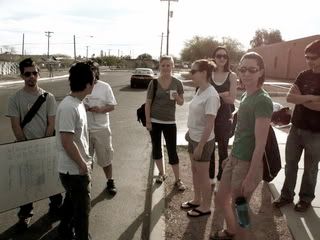
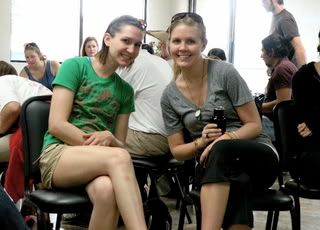
Danielle and Karina
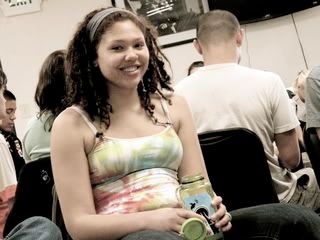
Liz!
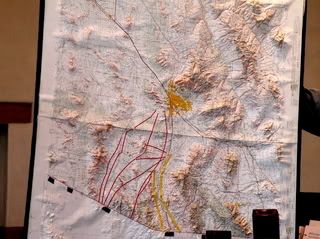
Topographic map detailing many of the known migrant trails used to cross the border through the desert. As you can see, there are mountain ranges that make for an extremely dangerous journey by foot that would take about five days for someone in very good health.
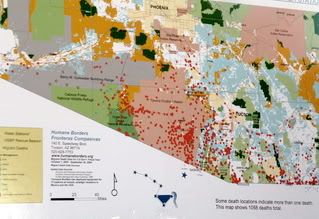
Each red dot on this map indicates where a migrant was found dead in the Arizona desert between 2001 and 2007. It is estimated that for every body found, there are ten more deaths whose remains will not be discovered.
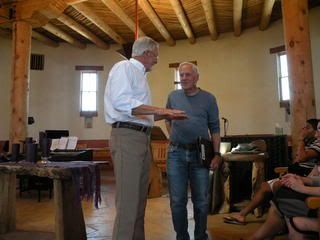
The original founders of the Sanctuary Movement in the 1980s. The Sanctuary Movement was a coalition of churches that offered shelter to refugees who fled Central America in order to avoid persecution from U.S.-backed government oppression. The U.S. could not recognize these migrants as political refugees because that would require taking responsibility for repressive conditions from which these people were fleeing.
After additional training on basic first aid and the importance of using common sense in the desert (drink water, drink water, drink water), we were shown a presentation by the Sierra Club about the environmental devastation being caused by the construction of the border wall. The Bush Administration used the Patriot Act to overturn 35 federal laws that protected wildlife habitat throughout the borderlands. Just flat-out broke the law in an effort to prove how easily we can waste colossal amounts of money. Never mind that it only slows migrants down by an average of five minutes, but the wall serves to destroy the lives of endangered species that are not found in other regions of the world. Migratory animals are often separated from water sources and cannot find food because they are not able to climb the walls designed to keep the people out. It makes me furious.
Sunday afternoon we packed up our cars and headed out to the camp located outside of Arivaca.
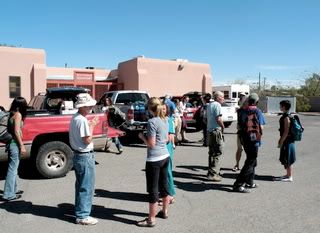
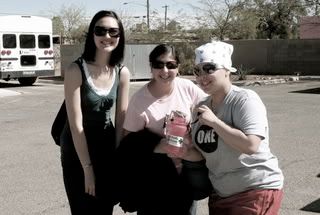
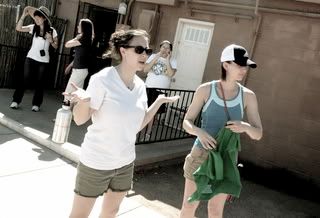
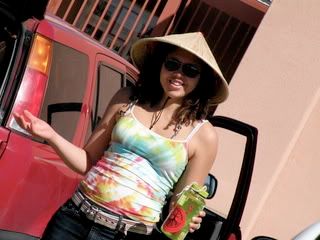
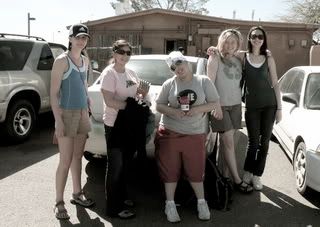
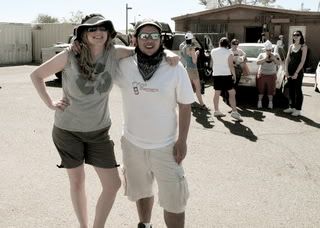
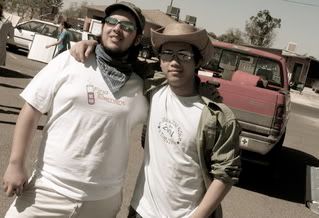
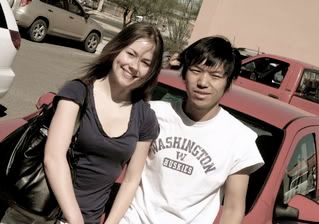
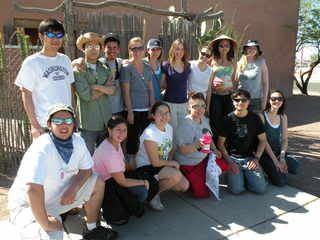
The Washington Group
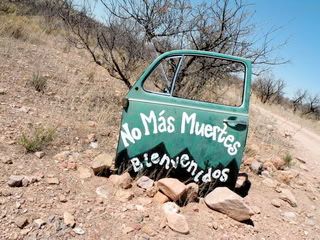
We woke up at 6:30am each morning, ate breakfast, then took off on patrols in groups of 4 or 5 to deliver water, food and offer medical assistance in the event that we encounter migrants. None of my patrols encountered migrants, but we did encounter border patrol one day. No More Deaths is well-known and is pretty much left alone by Border Patrol under the guise that humanitarian aid is never crime. Our hikes typically lasted around 5 or 6 hours, and we used 4-wheel drive vehicles to drive out to weigh points mapped by GPS. The Arizona desert is beautiful, simply marvelous.
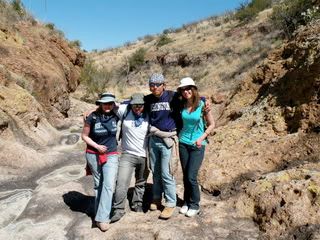
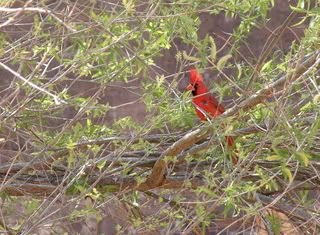
Arizona is a popular destination for bird-watching. This a Vermilion flycatcher.
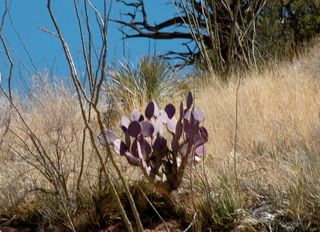
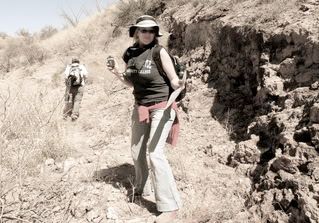
Using GPS is fun!
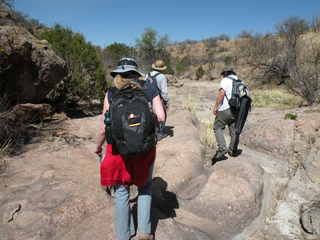
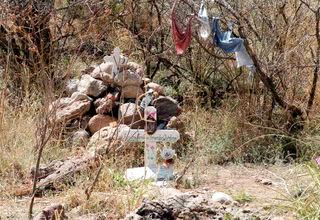
Our patrol leader, Gene, took us to a shrine that had been erected in honor of Josseline Janiletha Hernandez Quinteros, a 14-year-old girl who was found dead after having been abandoned by her group because she was unable to keep up with them.
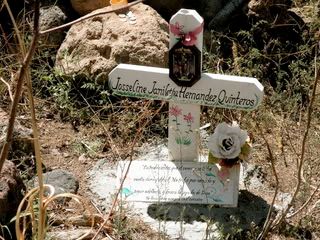
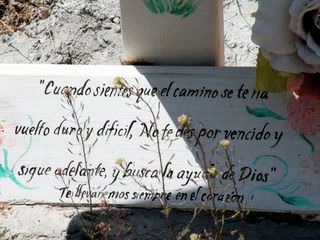
"When you feel that the path has become hard and difficult, don't turn back, continue onward and search for the help of God. We will carry you in our hearts forever."
Visiting Josseline's shrine invoked a lot of emotion for me, and her family had given Gene a photo of Josseline that was taken right before she left to cross the border. Later we encountered a migrant rest area that was obviously heavily trafficked.
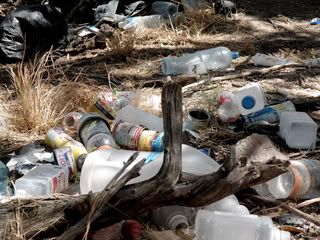
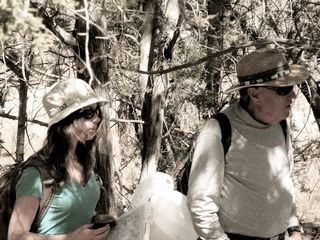
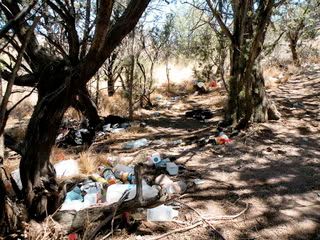
Towards the end of our patrol we ascended a steep and rocky cliff that provided an amazing panoramic view of the desert terrain.
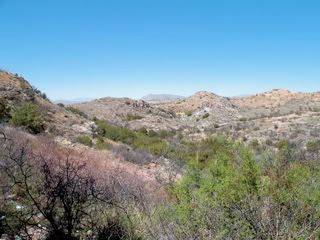
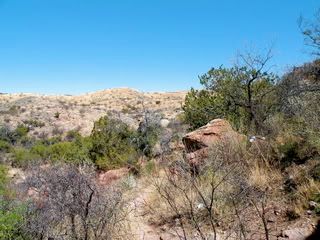
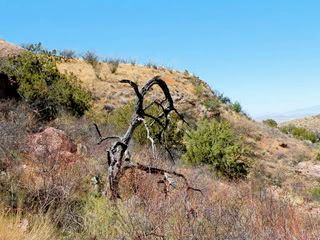
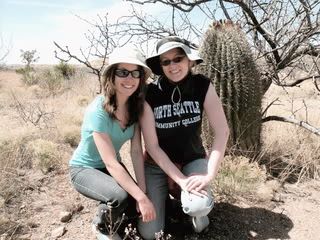
Rachael, me and our cactus friend
The next day our patrol went to a different area.
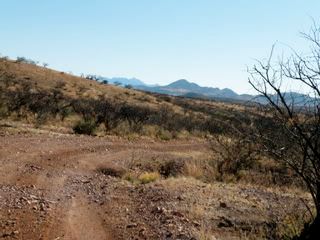
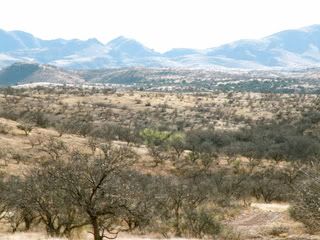

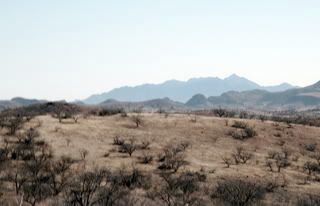
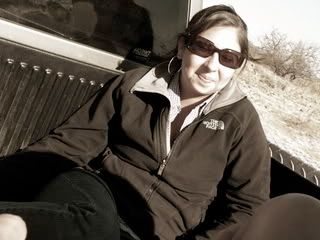
Brianna, riding in the back of the truck to our patrol weigh point
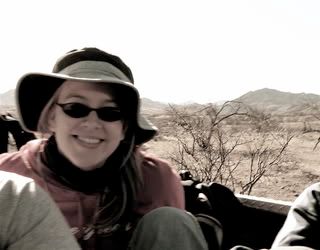
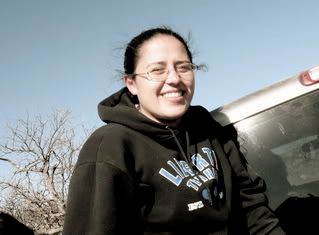
Rachel
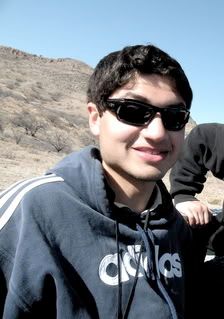
Dominic
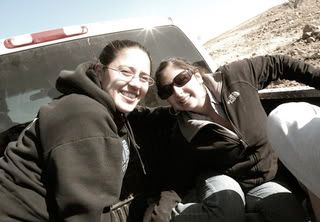
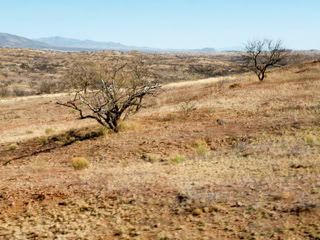
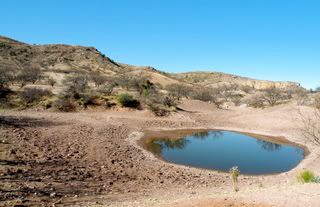
There are tons of free range cattle wandering in the desert, and these are their watering holes. They are filthy cesspools of cow dung, microbes and other really bad bacteria that should absolutely not be ingested by human beings.

Unfortunately, people do drink from them when they are on the verge of death from thirst. This only causes further dehydration from diarrhea and vomiting, making death all the more likely. We placed additional gallons of pure water here in case anyone might be compelled to drink from it.

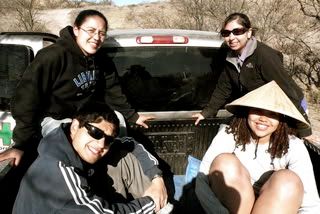
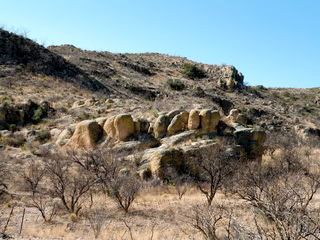
Who knew the desert could be so beautiful?
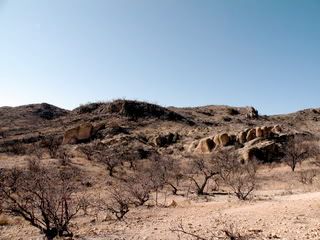
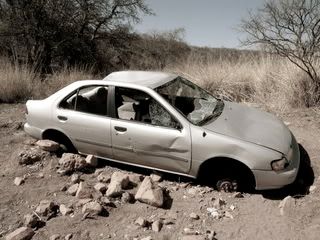
On this patrol we encountered a car that had been completely stripped and was riddled with bullet holes. Very strange.
On Wednesday we made a trip to Nogales, Mexico. There is a NMD aid station there to receive migrants who have been recently deported.
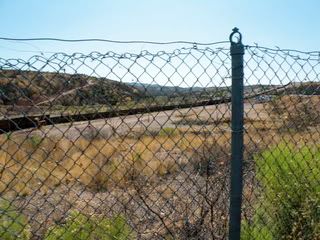
The border wall at Nogales. There are holes in the chain link fence where migrants will try to hop the border during BP shift changes.
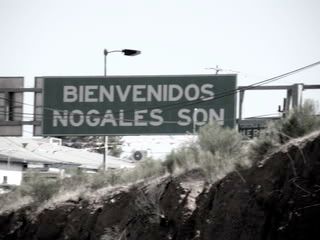
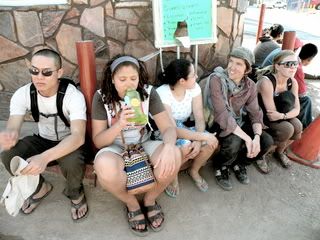
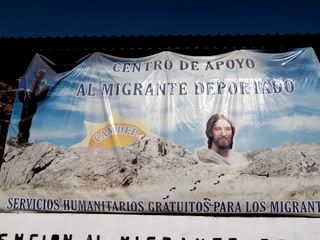
We served food to recently deported migrants here, at a place called the Comedor. Deported migrants are able to have two meals a day for two weeks after being deported, and must show their deportation papers in order to enter.
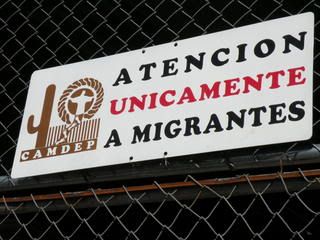
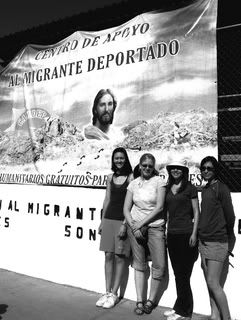
After serving meals and conversing with migrants, we head back to camp in the States.

The next day we went on another patrol.
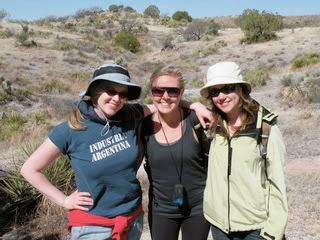
Me, Karina and Rachael
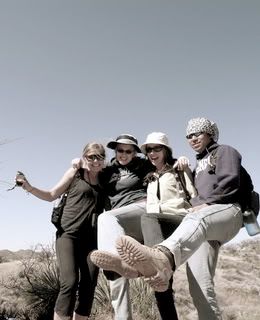
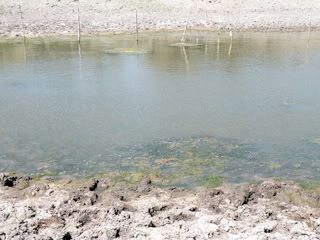
Another cow pond
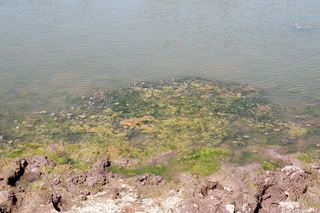
Can you imagine having no other option than to drink this filthy water? It makes my stomach hurt just thinking about it...
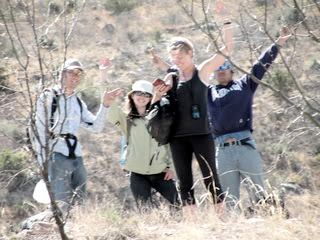
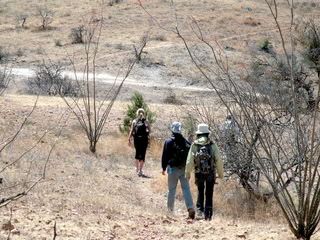
On Thursday we took a trip to Sasabe, Arizona, a tiny little town right on the border, in order to see this section of the border wall up close.
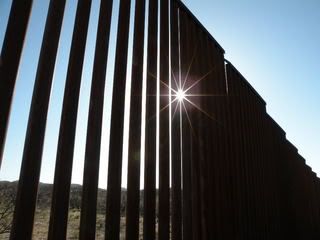
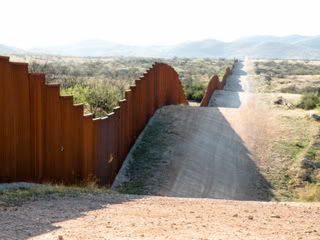
If you look a little bit into the distance, you can see the mountains. This is where the wall stops. So, why not just walk around? Right... Another colossal waste of our tax dollars.
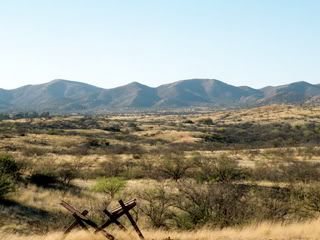
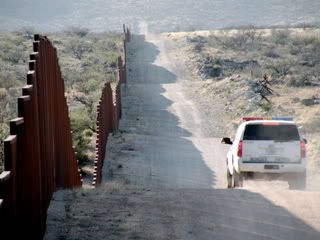
Border Patrol wanted to know what we were doing there. Then they took off to patrol the border to make sure we wouldn't be "harassed by angry Mexicans".
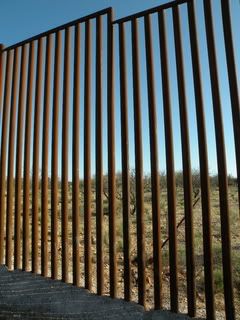
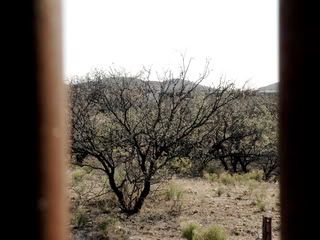
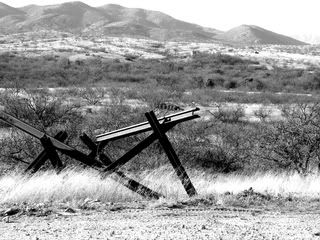
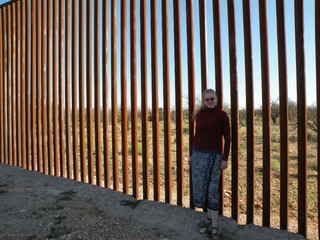
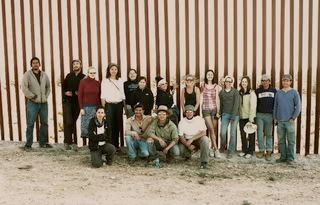
My experience with No More Deaths was amazing. I learned so much about border politics and human migration. I was challenged physically, mentally and emotionally during my week volunteering. I plan on returning next year to volunteer again. In an ideal world, this organization will not exist for much longer. Visit No More Deaths online at www.nomoredeaths.org to find out more information about this extraordinary humanitarian aid organization.

Thanks for sharing in detail. Your blog is an inspiration! Apart of really useful tips, it's just really ! This post will be effectively Just about everything looks good displayed.
ReplyDeleteVisit more info Endodontics Los Angeles